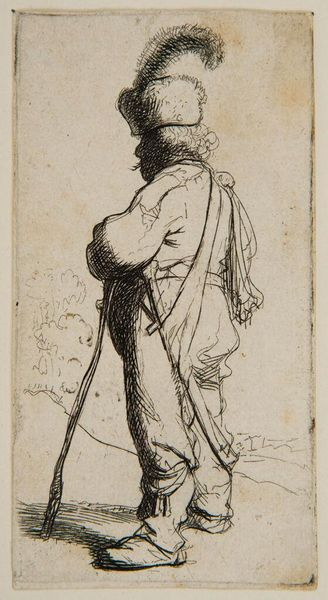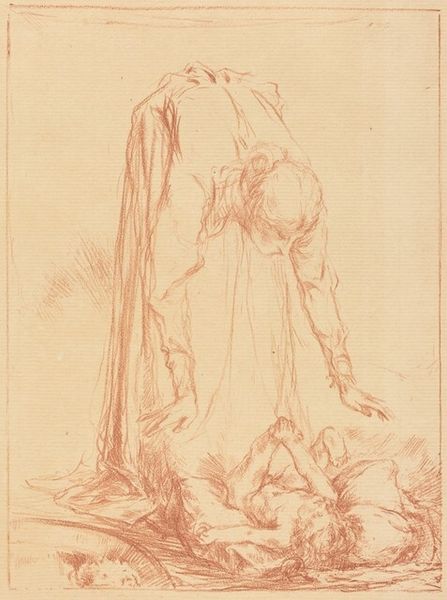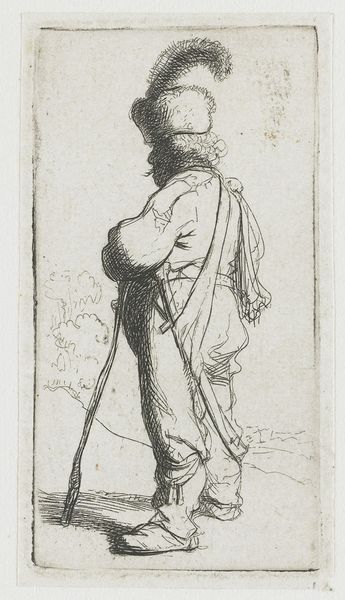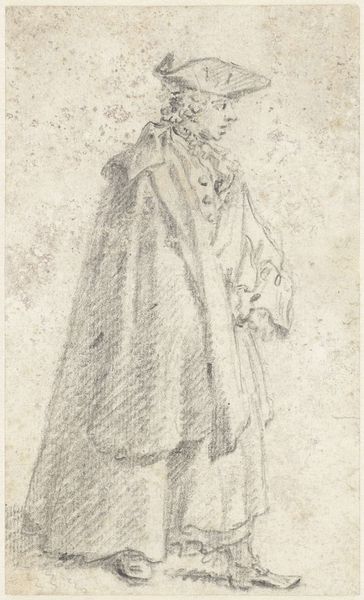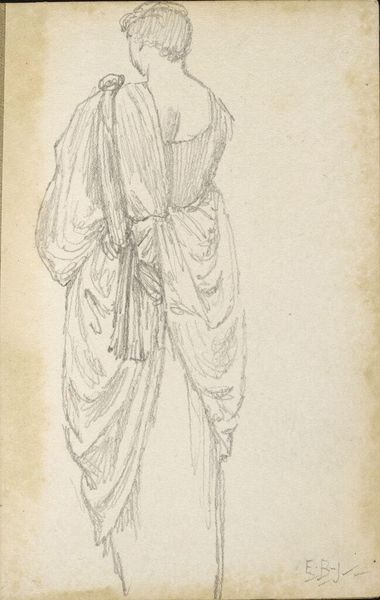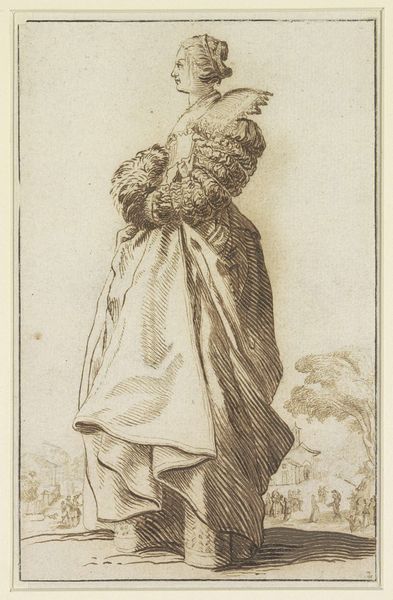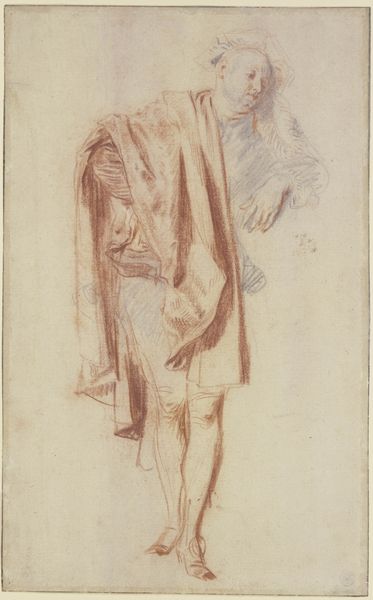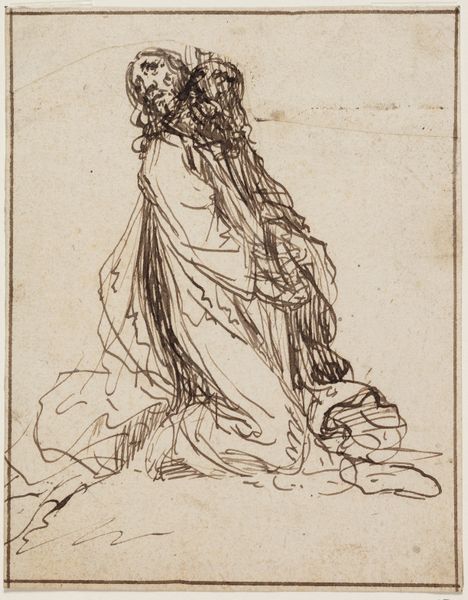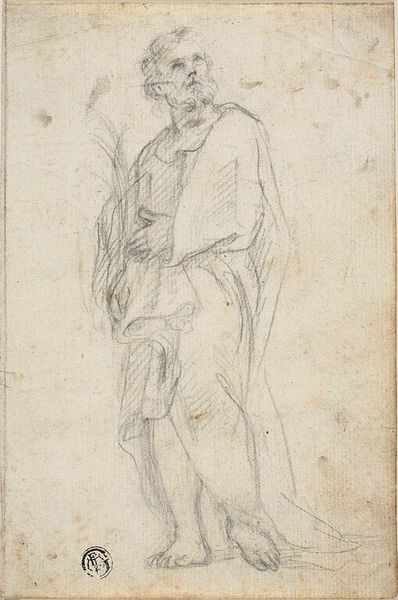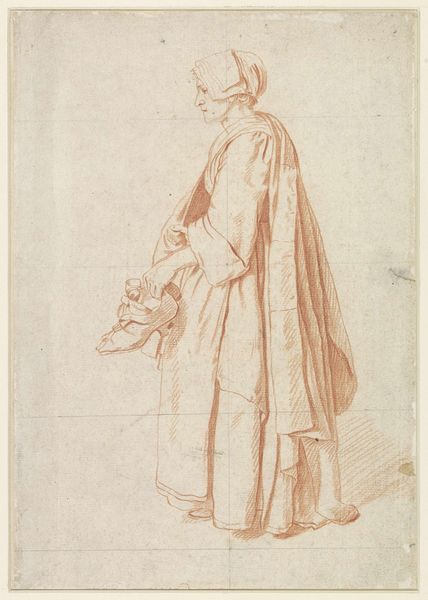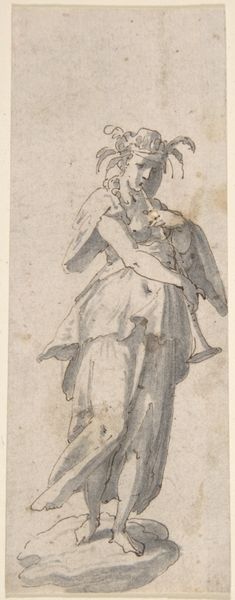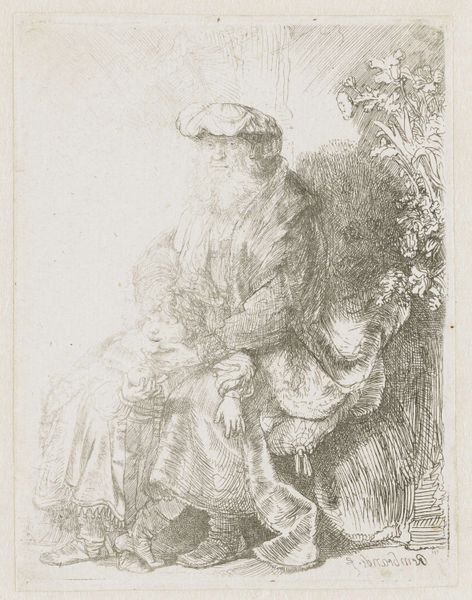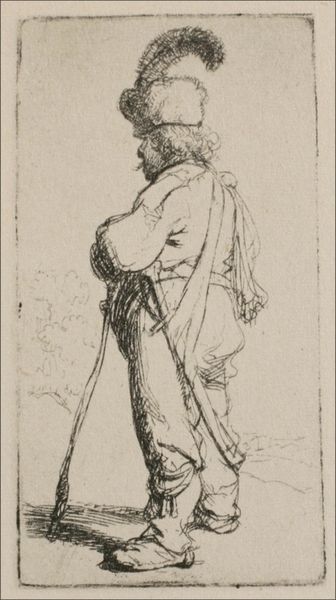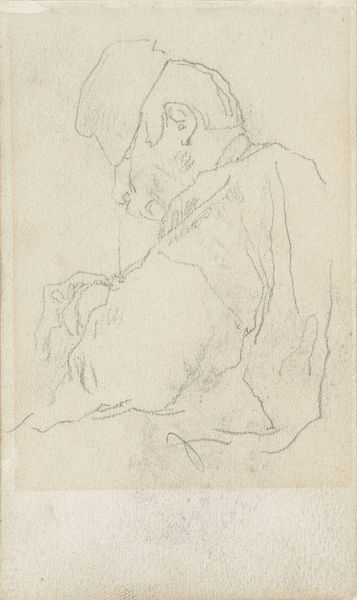
#
light pencil work
#
quirky sketch
#
pen sketch
#
pencil sketch
#
personal sketchbook
#
ink drawing experimentation
#
pen-ink sketch
#
sketchbook drawing
#
sketchbook art
#
initial sketch
Dimensions: height 81 mm, width 43 mm
Copyright: Rijks Museum: Open Domain
This is "Polander leaning on a stick," an etching made by Rembrandt van Rijn, a Dutch artist, in the 17th century. Etching involves covering a metal plate with a waxy, acid-resistant substance called a ground, through which the artist scratches an image. Acid then bites into the exposed metal, creating recessed lines that hold ink. In this small print, Rembrandt uses the etching process to create a rich surface of lines and tones. Note the figure’s exotic hat and the way light catches the folds of his clothing. The material quality of the print—the delicate lines and subtle gradations of tone—belies the labor-intensive process used to create it. The finished etching could be reproduced many times, and sold in the open market. In this way, the print participates in the early modern economy, blurring the lines between fine art and a more democratic form of image production. Considering the relationship between materials, making, and commerce helps us to fully appreciate Rembrandt’s achievement.
Comments
No comments
Be the first to comment and join the conversation on the ultimate creative platform.
